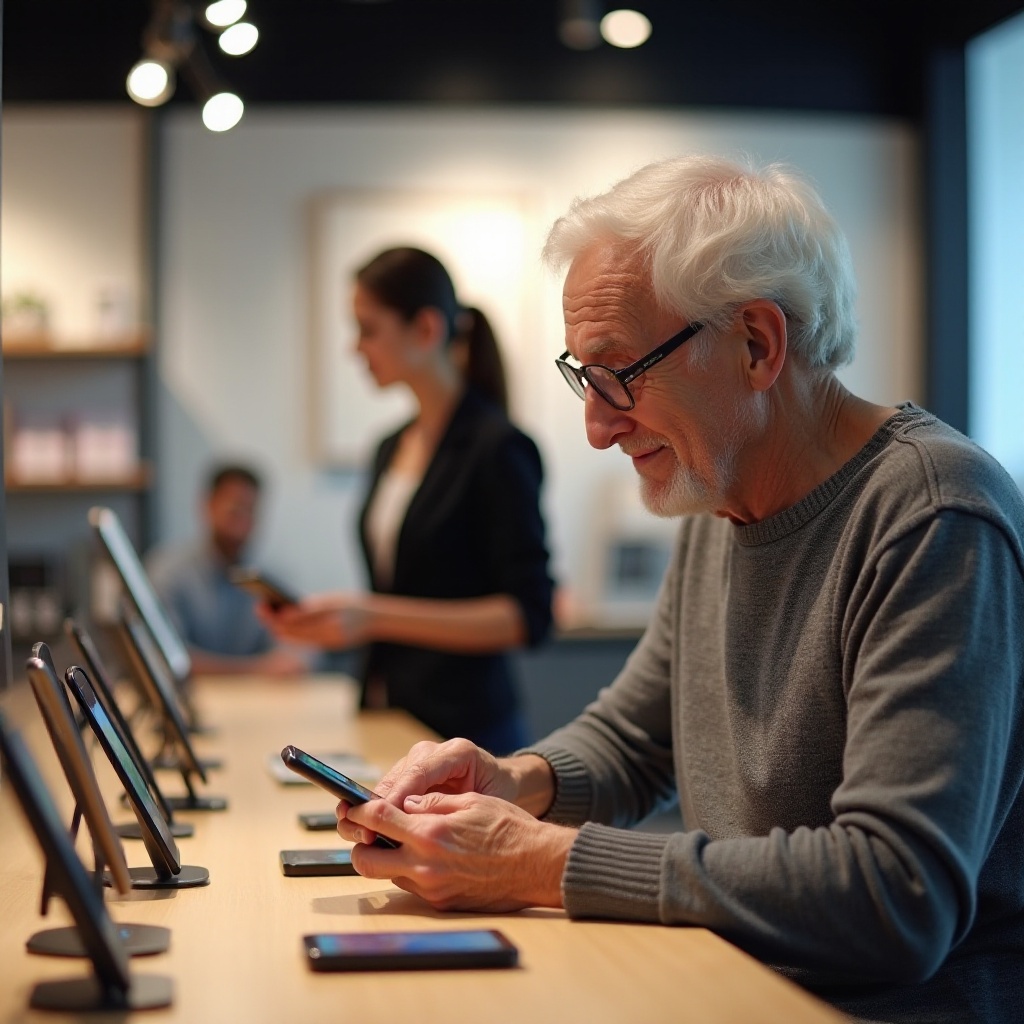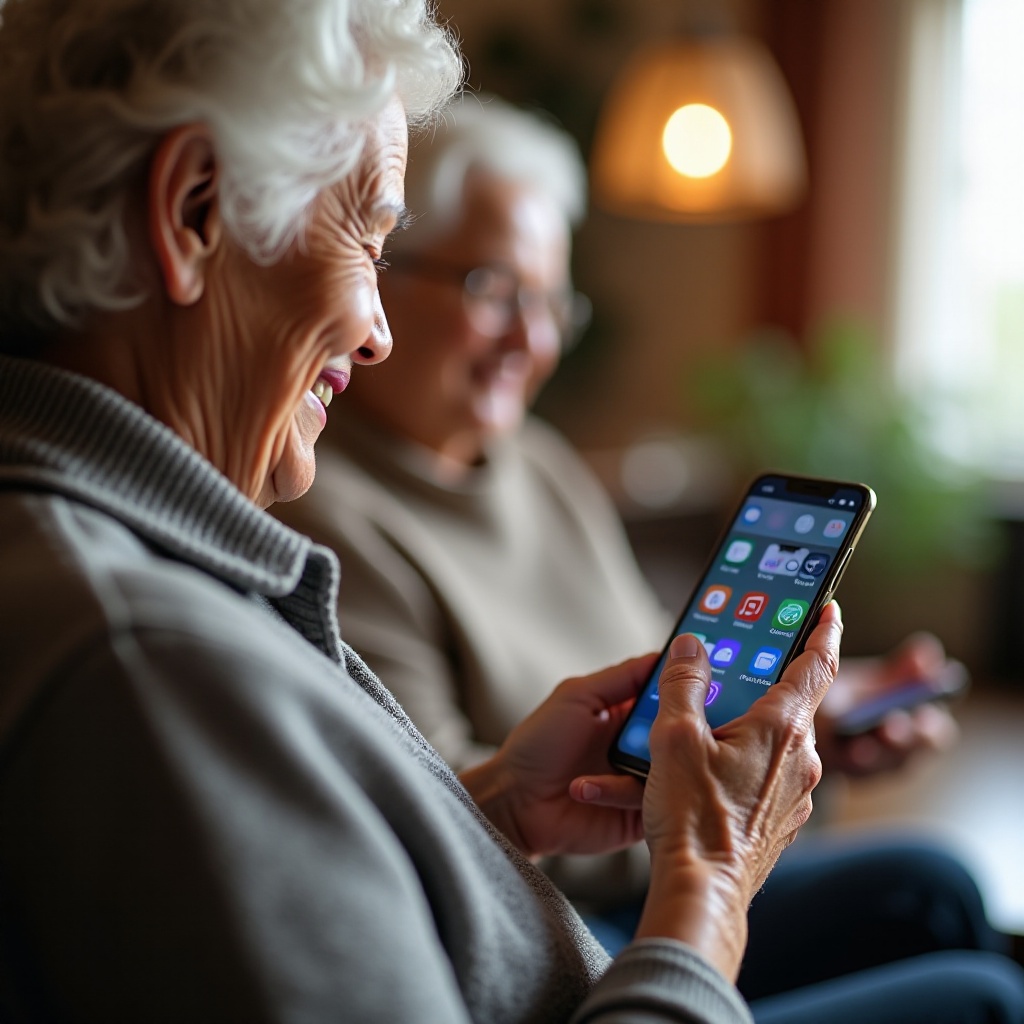Introduction
Smartphones have become an essential tool in daily life, offering a myriad of functions that make communication, entertainment, and even health management easier. While smartphones can initially seem intimidating for seniors, they can offer substantial benefits in staying connected and informed. This guide will walk you through the basics of using a smartphone, ensuring that you can enjoy all the advantages this technology offers with ease.

Choosing the Right Smartphone
Selecting the right smartphone is the first crucial step. The market is flooded with numerous models, each offering different features. For seniors, choosing a smartphone with a user-friendly interface, large display, and loud speakers can enhance the user experience.
Consider models such as the iPhone SE, Samsung Galaxy A series, or specific senior-friendly smartphones like the Jitterbug Smart3. These devices offer simple navigation and accessibility features tailored for seniors. Furthermore, it’s wise to consider a phone with long battery life and reliable customer support.
Once you’ve selected a suitable device, let’s move on to setting it up so that it serves you perfectly.

Setting Up Your Smartphone
Once you have chosen the right smartphone, setting it up is the next step. Begin by unboxing the phone and inserting the SIM card, which connects your phone to the network. Charge the phone fully before switching it on.
When you first power on your device, you will go through an easy-to-follow setup process:
1. Select your preferred language.
2. Connect to a Wi-Fi network to save on mobile data.
3. Sign in with or create a Google account for Android devices or an Apple ID for iPhones.
4. Enable location services to use maps and other location-based apps.
5. Choose your display preferences, such as font size and brightness, to ensure readability and comfort.
With the setup complete, it’s time to understand some basic functions that you’ll frequently use.
Understanding Basic Functions
Making and Receiving Calls
Making and receiving calls is a fundamental function of any smartphone. To make a call:
1. Open the phone app, usually represented by a green phone icon.
2. Dial the number directly or select a contact from your phonebook.
3. Press the call button to initiate the call.
Receiving calls is straightforward; simply swipe or tap the receive call button when the phone rings.
Sending and Receiving Text Messages
Text messaging is another essential function. To send a text message:
1. Open the messaging app, often depicted as a chat bubble icon.
2. Tap on the new message icon.
3. Enter the recipient’s phone number or select a contact.
4. Type your message and hit send.
Receiving a text message will trigger a notification, which you can tap to read the full message.
Beyond these basics, smartphones offer a wide array of apps that enhance their functionality.
Exploring Essential Apps
Smartphones support a variety of apps that enhance their functionality. These apps can make communication easier, improve health and safety, and provide entertainment.
Communication Apps
Communication apps like WhatsApp, Skype, and Zoom are excellent for staying in touch with family and friends through text, voice, and video calls. These apps are user-friendly and offer additional features like sending pictures and creating group chats.
Health and Safety Apps
Health apps such as MyFitnessPal, Medisafe, and Apple Health can help manage medications, track physical activity, and monitor important health metrics. Safety apps like Life360 share real-time locations with trusted family members for added security.
Entertainment Apps
Entertainment apps like Spotify for music, Kindle for reading, and YouTube for videos and podcasts can keep you entertained and engaged.
Besides these essential apps, smartphones come with various accessibility features designed to make usage simpler.

Accessibility Features
Smartphones come with a range of accessibility features designed to make their use easier for everyone, especially seniors.
Adjusting Text Size and Screen Brightness
To improve readability, adjust text size and screen brightness:
1. Go to the settings menu.
2. Select ‘Display’ or ‘Accessibility’.
3. Adjust the text size slider to achieve a comfortable reading size.
4. Change screen brightness to reduce eye strain.
Voice Commands and Dictation
Voice commands and dictation can simplify using your smartphone:
1. Activate voice assistant (Google Assistant for Android, Siri for iPhone) by holding the home button or saying the wake word (‘Hey Siri’ or ‘Okay Google’).
2. Speak your commands like making a call, sending a text, or setting reminders.
3. Use the dictation feature to type by speaking, which is found on the keyboard in messaging apps.
Understanding these features helps in making the smartphone more user-friendly, but it is also crucial to remain safe while using these devices.
Staying Safe on Your Smartphone
While smartphones offer many benefits, it’s crucial to stay safe and secure.
Privacy Settings
Secure your privacy by managing settings:
1. Go to the settings menu and select ‘Privacy’.
2. Restrict app permissions to only the necessary ones.
3. Use a strong, unique password and enable two-factor authentication for extra security.
Recognizing Scams
Beware of common scams. Here’s how to recognize them:
1. Be skeptical of unsolicited emails or messages asking for personal information.
2. Avoid clicking on links from unknown sources.
3. Familiarize yourself with common scam tactics, such as phishing and fake tech support calls, and always verify the sender’s identity.
By following these safety tips, you can confidently use your smartphone while minimizing the risk of falling prey to scams.
Conclusion
Using a smartphone may seem overwhelming at first, but it becomes intuitive with practice. By following this guide, seniors can maximize the benefits of their smartphones to stay connected, informed, and entertained while maintaining their safety and privacy.
Frequently Asked Questions
What are the easiest smartphones to use for seniors?
Some of the easiest smartphones for seniors to use include the Jitterbug Smart3, iPhone SE, and Samsung Galaxy A series. These phones offer user-friendly interfaces and essential accessibility features.
How can I make my smartphone more senior-friendly?
Make your smartphone more senior-friendly by adjusting the text size and screen brightness, and enabling voice commands. Pre-installing essential apps and placing frequent contacts on the home screen for easy access also helps.
What are some ways to troubleshoot common smartphone problems?
Troubleshoot common smartphone problems by restarting your device, keeping software updated, and clearing app caches. If issues persist, consult the phone’s user manual or seek assistance from the manufacturer’s customer support.